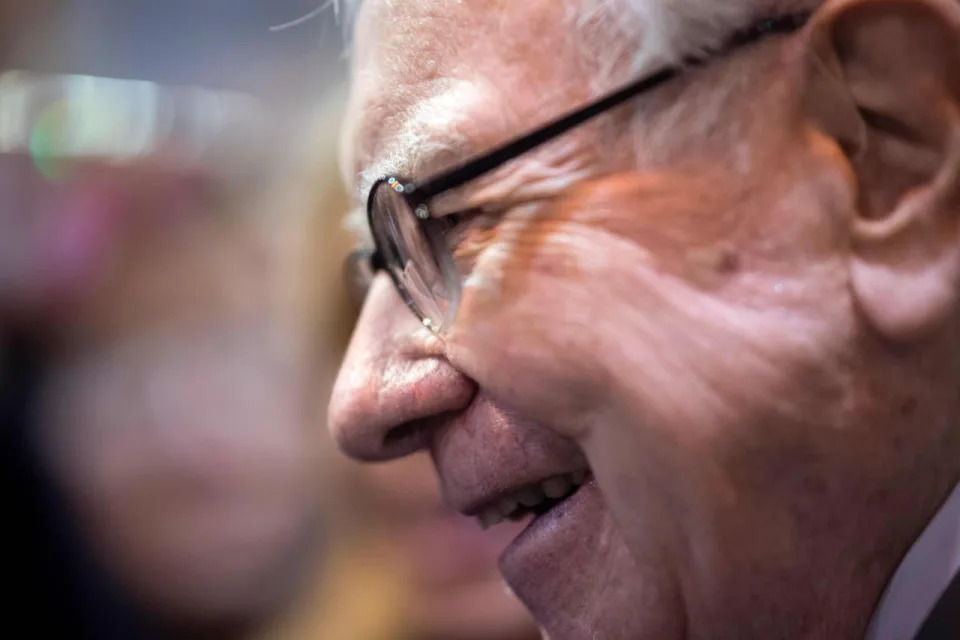Warren Buffett stocks for your IRA in 2025

Six blue-chip stocks aggressively backed by Warren Buffett are on sale on Wall Street as the year draws to a close, mainly due to broad economic factors and stock market fashion.
That makes them worth a look, even for lower-risk investors whose retirement accounts are mostly invested in standard low-cost mutual funds. Even owning just a few percent of your portfolio in individual stocks, alongside funds, could nudge the performance dial over time.
U.S. oil giant Occidental Petroleum OXY and Japanese conglomerates Mitsubishi MTSUY, Sumitomo SSUMY, Mitsui MITSY, Marubeni MARUY and Itochi ITOCY have plunged in price lately and all of whose shares can be bought easily in New York by U.S. investors. Occidental has fallen with the oil market, while stocks in the Japanese companies have fallen with the yen and with concerns about the neighboring Chinese economy.
Occidental stock has fallen to $120 lately, from $171 last April and a peak of $185 in 2022. This follows the slump in global oil prices, dragged down by worries about the Chinese economy, fears that the trade policy of the incoming Trump administration may hurt global economic activity, and—understandably, though little reported—that the new administration’s pro-oil stance is likely to lead to a surge in output.
The decline isn’t deterring Buffett, whose Berkshire Hathaway conglomerate has been aggressively buying more Occidental stock lately . Buffett’s company already owned 28% of all Occidental stock, worth $12.7 billion.
Occidental stock does not look especially cheap at first glance: It trades at 15 times forecast per-share earnings for the next 12 months, with a dividend yield of just under 2%. Buying the stock is really a bet on two things: That the global oil price will recover, and that Buffett knows what he is doing. Both things have been reliable in the past, though there are never any guarantees.
The Japanese conglomerates or “trading houses” are more intriguing. It is hard to describe these companies in Western terms, which is why most media coverage keeps referring to them, vaguely and unhelpfully, as “trading houses.” They are, really, highly diversified conglomerates, active in ventures around the world from mining to manufacturing to banking to consultancy, healthcare and logistics. They own or part-own solar and wind farms, roast and trade coffee, operate hospitals and water waste systems, manufacture railroad carriages and motorbikes, own real estate and forests, farm salmon, make medical devices and lease trucks.
All five have “American depositary receipts,” effectively U.S.-based shares, trading domestically and readily available to U.S. investors.
Buffett, in last year’s Berkshire Hathaway annual report, compared the five “highly-diversified” companies to Berkshire itself. He said Berkshire now owns about 9% of the stock of each one, and called the investments “passive” and “long term.”
All five are well off their peaks from earlier in the year. Mitsubishi is down 30% since the end of the first quarter. More important, perhaps, all five look inexpensive by traditional measures. Their stocks sell for anywhere from 7.5 to 12 times forecast per-share earnings. Three—Sumitomo, Marubeni and Mitsubishi—have forward-looking dividend yields of around 4%.
(Buffett has praised the management of the companies for being shareholder friendly, and says they also like to buy back stock when it is cheap.)
Bottom line: There is a case for making a side bet on these stocks, even while keeping 95% or more of your portfolio in regular funds.
These Buffett stocks look more interesting at this point than stock in Buffett’s Berkshire Hathaway BRK. B, which has grown so big—it is now valued at about $1 trillion—that it struggles to outperform the broader U.S. stock market indexes.
None of this, naturally, comes with any guarantees. Every individual stock is risky. On the other hand, so are this season’s must-have fashion accessories on Wall Street, namely large U.S. “growth” stocks.
Over the past decade their share prices on average have risen twice as fast as their actual per-share earnings. As a result the Vanguard Growth ETF VUG, which owns the index of big name growth stocks, now trades for 30 times forecast per-share earnings. That’s about 50% more expensive than it was five years ago, even in relation to rising earnings, and about twice as expensive as it was back in 2013.
So, which is the riskier proposition: That shares in wildly popular U.S. “growth” companies will continue to rocket even faster than earnings in the years ahead or that Warren Buffett still knows how to pick stocks? Your money, your choice.

